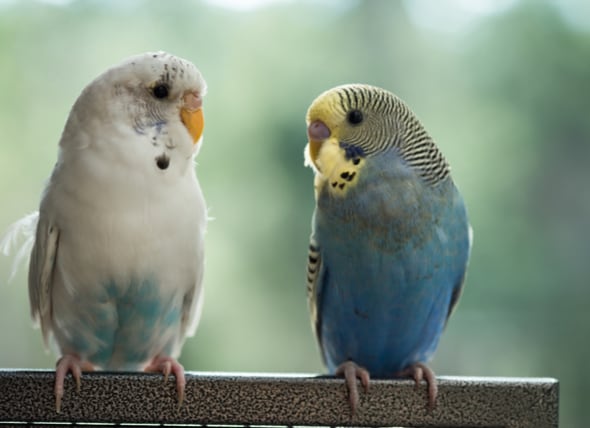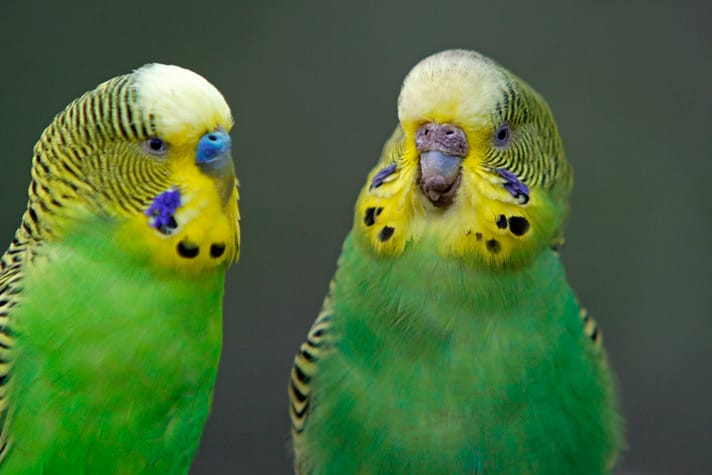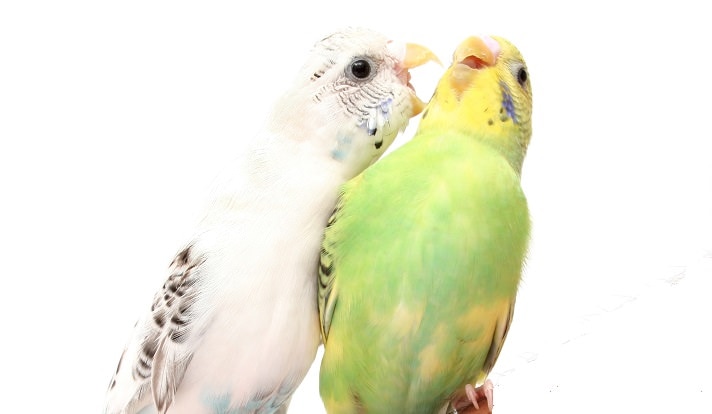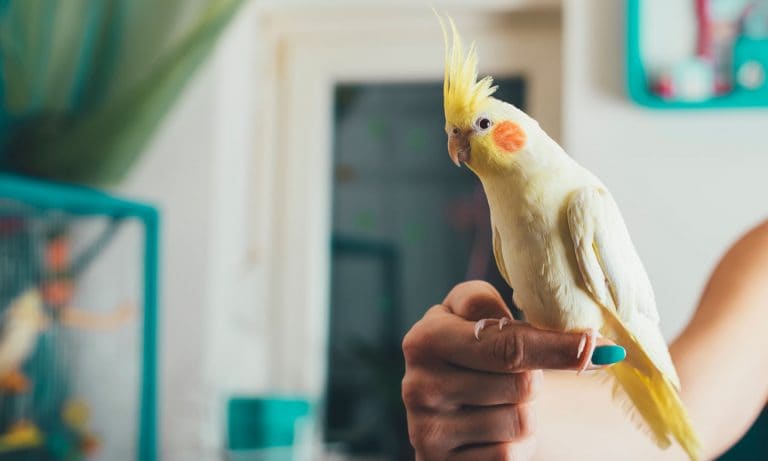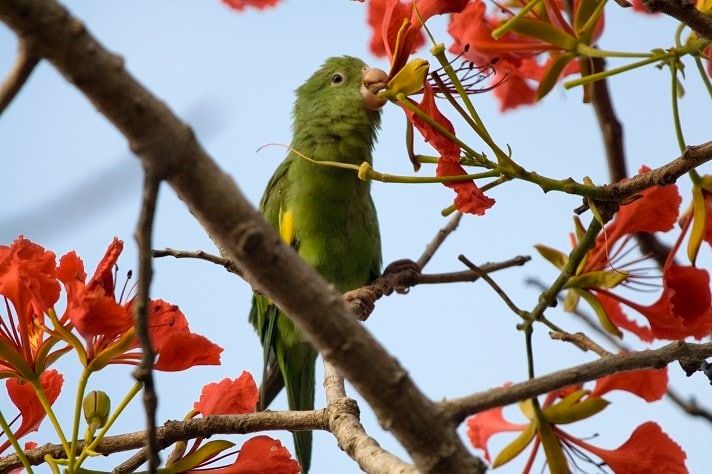If you’ve had your pet budgie for awhile and, all of a sudden, your budgie is acting weird, don’t worry. There’s good news, and more good news. First, your parakeet is likely displaying typical hormonal behavior. Second, there are things you can do to reduce hormonal triggers to help your parakeet get back to its sweet, normal self.
Larry Nemetz, DVM, of The B.I.R.D. Clinic in California describes hormonal budgie behavior as “the rising of estrogen and testosterone levels, resulting in a change in your budgie’s behavior.” Those changes can be both physical and behavioral, and male budgies display some different behaviors than female budgies.
There are several parakeet behaviors that can be chalked up to “hormonal.” According to Nemetz, while all birds are individuals, male parakeets don’t seem to get as hormonal as female parakeets. “Some birds don’t show signs of being hormonal, and other birds get really stressed out during this period of time,” bird expert Chrys Meatyard added. “A single, hormonal budgie might try mating with its human, a bird toy, a perch or anything else. Bonded, paired budgies will likely mate and produce eggs/babies. Single female birds can lay infertile eggs.”
Some typical hormonal parakeet behaviors include:
Aggression
Samuel Vaughn, DVM, Dip. ABVP, concurs that gender is, indeed, often a factor when it comes to aggressive behavior in budgies.
“‘Mean’ behavior might include your parakeet not stepping up or hissing when the owner puts a hand in the cage,” said Vaughn, a veterinarian for 23-plus years who practices at Veterinary Associates Stonefield in Louisville, Kentucky.
He recommends leaving the female budgie alone in her bird cage during that time, which averages three to six weeks. You might have to clean the bottom of your parakeet’s cage a little more often because hormonal female budgies often have very large, liquid droppings.
Courtship
In a signal of readiness, a female budgie will squat on bird perches, put her wings out and coo. Most parakeets pick a favorite owner and will do this only to them, Vaughn said. That “harmless” bird toy you know as a mirror can be a trigger for courting behavior as well, including regurgitation. To discourage courting behavior, Nemetz recommends taking away any mirrors or nest boxes for your parakeet.
Regurgitation
“When budgies regurgitate to their human, it’s a sign of affection toward that person,” Meatyard said. “Oftentimes, people are more accepting of this parakeet behavior when they understand why the bird is regurgitating to them. For those who can’t tolerate their budgie throwing up on them, I recommend focusing the bird’s attention on something else just as soon as they see their budgie stretching its neck trying to bring food up to regurgitate.”
Put your parakeet back in its bird cage, on its play stand or otherwise refocus the bird’s attention.
“By no means should a person make a big deal out of it or discipline their bird from exhibiting this behavior,” Meatyard cautioned. “To do so might communicate to the bird that the affection isn’t mutual.”
Regurgitation isn’t just about love, it’s also about parenting.
“This is a natural instinct, as the male budgie regurgitates food to its mate and to its young,” said Harlan Flora, vice president and director of education of the American Budgerigar Society.
Masturbation
Hormonal activity may include masturbation by both male and female budgies. If you’ve ever noticed your bird squat down on its perch and rub itself on the perch or cage bars of bird cages, rest assured, your parakeet is perfectly normal. However, if your budgie sits on your hand during one of these sessions, you may prefer that your parakeet express itself elsewhere.
“You can either just put your budgie back in its cage or play gym and walk away, or you can gently jiggle your hand to make it not physically comfortable for the bird to continue the sexually oriented behavior,” said Chris Davis, a certified parrot behavior consultant. “This correction should immediately be followed with praise if the parakeet stops the behavior. I usually use that interlude to redirect the bird’s behavior to one that is more positive … playing with a favorite bird toy or offering a favorite treat, for example.”
Another distraction that Mike Rankin, chairman of the Budgerigar Association of America, recommends is scratching your budgie’s head.
“That will start the preening process and distract the parakeet for the mating cycle,” said Rankin.
Nesting
One telltale sign of breeding behavior for larger parrots is creating a nest—gathering and shredding materials to cushion the eggs. However, budgies go for the sparse look and don’t shred materials for a nest box. So that may not be a reliable clue. And even if your female budgie lives without a male budgie, hormones may still trigger her to lay eggs—if she doesn’t have access to a nest box, she’ll make due.
“If budgies don’t have a nesting box and they are preparing to lay eggs, they will lay their eggs on the cage bottom, in a parrot bird food/water dish or in anything else that might hold eggs,” Meatyard said. “Free-flighted birds will lay eggs anywhere they feel is safe.”
“If your parakeet is pulling paper up from the bottom of the bird cage, remove it,” Vaughn said. “She might go to weird places to nest outside of or behind the cage.”
Vaughn has heard of makeshift nests behind sofas, so always supervise your budgie when it is out of the cage. Of course, your female budgie may never lay an egg, so it’s another one of those “it depends,” situations in owning a parakeet.
Posted by: Chewy Editorial
Share:
